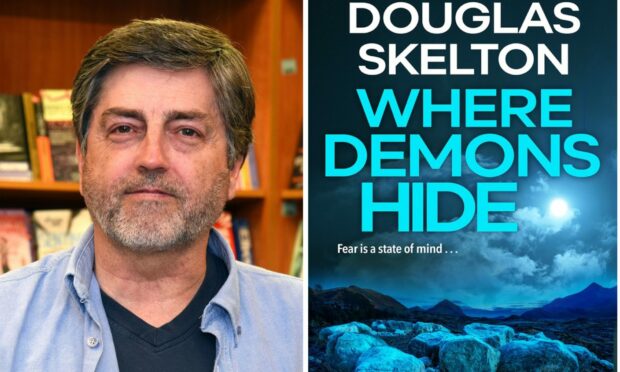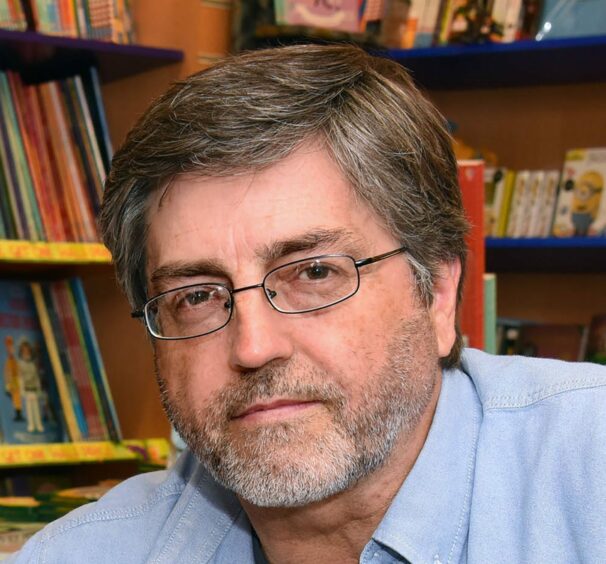Douglas Skelton’s latest gritty crime novel, Where Demons Hide, is set in the Highlands and drips with tension, discovers Gayle Ritchie.
Drenched in mystery, Highland history and dark humour, the compelling fourth instalment in Douglas Skelton’s Rebecca Connolly series leads the investigative journalist to a cult, a strange businessman and local drug dealings.
“Throughout the series I have flirted with the supernatural – the Highland setting lends itself to that – but this time I wanted to have Rebecca involved in a case that had stronger overtones, without going full-blown Buffy the Vampire Slayer,” says Glasgow-born Douglas.
“It’s still grounded in reality but the case itself involves elements of the occult from the first page.”
Real-life case
Douglas used the real-life case of Norah Farnario, who was found dead on Iona in mysterious circumstances in 1929, as a springboard but his plotline bears very little resemblance to the factual events.
The story kicks off with a woman’s body being found in the centre of a hastily cut pentagram on the moorland of the fictional isle of Stoirm. Rebecca and her friends sense a story. She was fleeing something, but what? And did she die of exposure or was there something more sinister at work?
Young journalist
Douglas describes Rebecca as a young journalist, now working for an independent news agency, who believes it is her duty to do the best job she possibly can, even if it means sacrificing her personal life.
“She doesn’t mind that because she has known a great deal of sadness in her twenty-something years,” he explains.
“That means she can be empathetic but always aware that she has a job to do. She has been through a very dark period but she is now emerging as a stronger, wiser person who is in charge of her life and her emotions. At least, she thinks she is!”
Crime fiction fans
He hopes readers will be both entertained and surprised by the novel, which he says is aimed primarily at crime fiction fans.
“I want to deliver darn good reads that keep the pages turning. Also, to inspire anyone who hasn’t visited the Highlands or islands to visit. It’s a wonderful place (Stoirm is fictional, though – don’t look for it on any map).”
When Douglas wrote non-fiction he spent a lot of time on research but says with fiction, he only researches what he needs to because it can “very easily become a rabbit hole that you can disappear into”.
He adds: “Also, with too much research I may be tempted to use it all and that’s a killer in genre fiction.
“I do what I need to make sure the story is grounded in reality and hopefully avoid including an absolute howler (although mistakes do happen).
“For this I had a chat with forensic pathologist Professor James Grieve, who, as usual, was fabulous.
“Any errors are mine, of course. I did some reading about the occult – much of it I’d already done over the years – but I still tweaked it to suit my purposes.”
Down to business
When it comes to the all-important business of sitting down to write, Douglas works in his dining room-cum-office, but admits his desk is an “absolute tip”.
“At the moment it’s covered in research volumes and notes for another book I’m writing. I do try to hit the 2,000 words a day mark and sometimes I can be bashing away at the keyboard until two or three o’clock (in the afternoon. I’m not a night owl).
“There are always other things that need to be done – articles, blogs, social media promotion, dogs to walk, watching Homes Under the Hammer – but discipline is necessary to complete the 90,000 to 100,000 words, but even when I’m dog walking I tend to consider what I’m going to write next.
“I’m not a planner, I’m too impatient and I’d probably change it anyway.
“I will have the original notion, usually an opening, sometimes I know where I’m going but mostly I build it as I go along. Sometimes I even surprise myself when something happens that I didn’t see coming!”
Advice for aspiring authors
In terms of advice for aspiring writers, Douglas says: “Be prepared for rejection, there’s a lot of it about.
“When you are published, don’t let praise go to your head or criticism get into your head. Don’t let your writing go stale – keep reinventing your work, even if it’s a series.
“Don’t expect to make a fortune – some authors do, most don’t.”
- Where Demons Hide, published by Polygon, is available in your local bookshop or online for £8.99 in paperback.












Conversation